Ga Samai: Traditional Ga Symbols from Ghana
Ga Samai, meaning “Ga Symbols,” are traditional symbols from the Ga people of Ghana. They represent concepts, proverbs, and aphorisms and are a shorthand that encode Ga wisdom. Thus, they are similar to Adinkra symbols which originate from the Akans.
List of Ga Samai (Ga Symbols) with Meanings
| No. | Symbol | Name | Meaning |
|---|---|---|---|
| 1 |
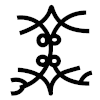
|
Abii Woo Ni Ahe Nu | Abii Woo Ni Ahe Nu is a Ga expression that literally translates as "One does not ask for honey and have water bought for them." Or, more crudely, "One does not ask for honey and they go and buy water (for him)." That means if one asks God for a thing, he should maintain a strong faith in him that he is able to do exactly as one desires. |
| 2 |
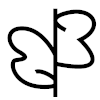
|
Abui | Abui is the Ga word for "needle." The symbol depicts a threaded needle. The proverb associated with this symbol is "Abui ni edɔ shaa ni," to wit, "A hot needle burns things." This proverb is sometimes rendered as "Abui ni edɔ shaa kpaa," where "kpaa" is Ga for "thread." Hence, the second rendering translates literally as "A hot needle burns a thread." The symbol warns against the dangers of anger and commends the virtue of patience. When one is angry, he must nonetheless exercise self-control lest he cause irreparable harm through his actions and his words which, once uttered, cannot be taken back. |
| 3 |
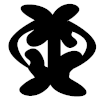
|
Akpakpa | Akpakpa is the Ga word for "pawpaw." The symbol depicts a pawpaw being held by two hands, one above and the other below. If they don't hold the fruit properly and it falls, it will crush on the floor and cannot be recovered. The symbol can also be thought of as depicting two people helping each other to move an object upwards. While one is pushing from the bottom, the other pulls from the top. The symbol has the following meanings: One meaning is that it pays to help one another to achieve our goals. The symbol is often compared to women. Here the idea is that just as the pawpaw is delicate and needs to be taken care of and preserved, so is the woman. Older women are thus tasked to raise younger women to be productive members of the society. If care is not taken in their upbringing, they are likely to go astray and, once the go astray, it is nearly impossible to bring them back on track. Additionally, the symbol is a reminder to married women that they are meant to play their motherly roles. So, even though men have responsibilities at home, women have the primary duty of ensuring that the home is well-organized and the children are raised properly. When they fail to play their roles, it is difficult to recover from the harm caused. |
| 4 |
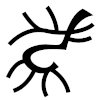
|
Asamankama | Be cautious of the company you keep, for none is to be trusted wholeheartedly |
| 5 |
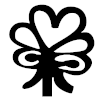
|
Asrafoi | Vigilance and unity of purpose is crucial for success in life |
| 6 |
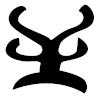
|
Atoobi | Respect is due everyone regardless of the person’s appearance or present circumstances |
| 7 |
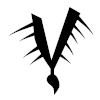
|
Atswa | Prevention is better than cure. It’s necessary to secure or protect your valuables, in order to save yourself the challenges you may encounter when you lose it. |
| 8 |
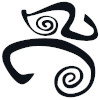
|
Hinmeisee | Personal development is essential, without which one fails in life. NB: Full proverb compares the ‘eye-brow’ to the beard to denote “respect”. i.e. “Regardless of how long the beard grows, it cannot match the eye-brow in seniority” |